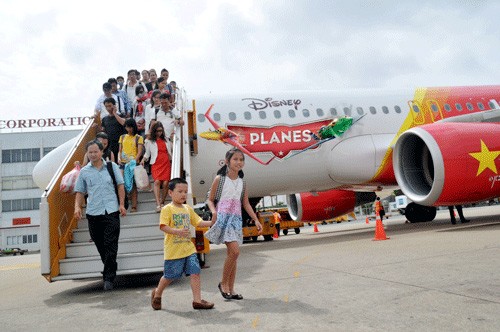|
Low cost carriers – a
suitable model for private airlines?
Only 30 percent
of passengers in

Indochina Airlines shut down just
after one year of operation. Air
The fact that Vietjet Air can make
profit while other airlines report loss has raised a hope that low cost
carrier (LCC) could be a reasonable model, especially for private run
airlines.
CAPA, an organization which
specializes in analyzing the aviation industry in Asia Pacific, believes that
Analysts believe that the investment
rate in the aviation sector is very high. Therefore, the first thing
investors need to have is the stable long term investment capital. Vietjet
Air is believed to be backed by powerful shareholders. The air carrier also
plans to make initial public offering (IPO) in the time to come to attract
capital from foreign sources.
Vietjet Air has been successful in
using the cash flow and ensuring the high quality of services. It can collect
money from ticket sale 3-9 months before the departure time, while they can
pay for air petrol, aircraft chartering, land services one month later, which
has helped balance the receipts and expenses.
With the four domestic air routes to
be opened from September, Vietjet Air would provide 500 flights a week on 16
domestic and international air routes.
According to Brendan Sobie from CAPA,
Vietjet Air’s domestic market share has increased from 14 percent in mid July
to 20 percent.
The private airline plans to set up a
series of joint ventures with foreign partners. It recently has joined hands
with Kan Air to develop the domestic air routes in
Analysts have noted that the
strategies followed by Vietjet Air have similarities with the ones pursued by
Air Asia over the last decade.
When asked about the services of the
“next-generation air carriers” like Vietjet Air, Luu Duc Khanh, Vietjet Air’s
General Director, said the carrier wants to become a fast food provider like
KFC or McDonald’s, which brings full, nutritious, tasty and enjoyable meals
at reasonable costs.
Analysts have commented that the
development of budget airlines in
The latest report by CAPA said making
IPO proves to be the core strategy for the regional budget airlines to
develop the fleets to 500 aircrafts by the end of the year, which represents
the 20 percent per annum growth rate.
In May 2012, Thai Air Asia completed
the IPO which brought $140 million in capital to serve the plan to expand the
fleet from 27 A320s in late 2012 to 35 by the end of 2013.
Air Asia X also successfully made IPO
in July and got $310 million for the plan to upgrade the fleet from 11 A320s
to 18 by the end of this year.
K. Chi,
|
Thứ Năm, 17 tháng 10, 2013
Đăng ký:
Đăng Nhận xét (Atom)
Không có nhận xét nào:
Đăng nhận xét